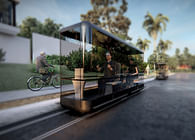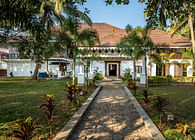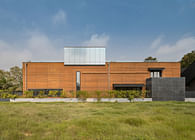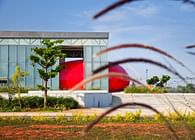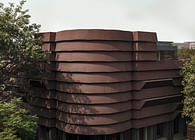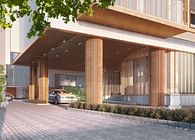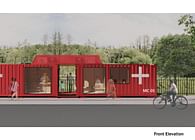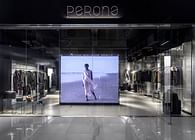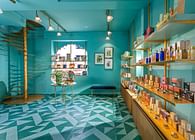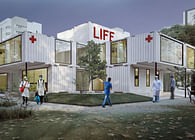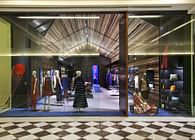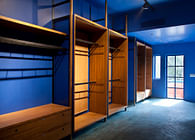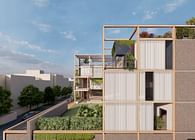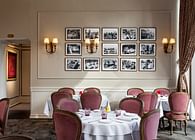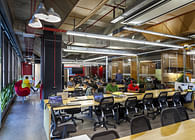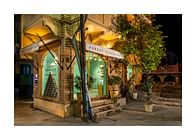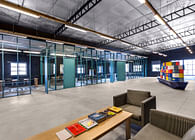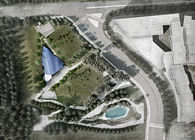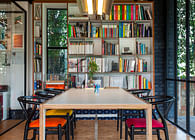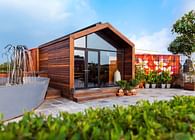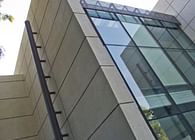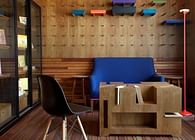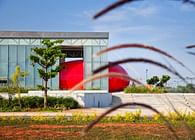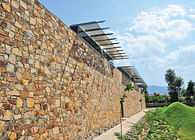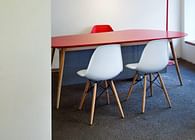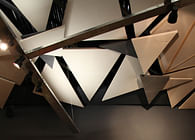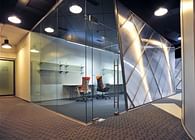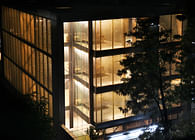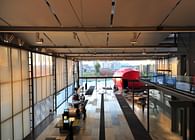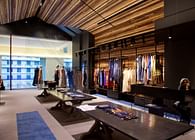
New Delhi, IN
Bridge And Bus Stop In Mass Timber, Delhi
Architecture Discipline’s concept for a mass timber foot-over bridge and bus stop in Delhi aims to popularize the sustainable material and integrate it into the mainstream material vocabulary of India.
The global building industry is infamous for its contributions to carbon emissions, with a significant portion of it resulting from concrete and steel production. With the negative impacts of carbon emissions beginning to reveal themselves through climate change, architects are exploring and adopting sustainable alternatives for construction materials that perform as well as their conventional counterparts. Mass timber is one of several materials that is part of this movement and is quickly being integrated into sustainable building projects around the world worldwide.
Mass timber, short for massive timber, is an engineered form of structural timber made from sticking softwood planks together. Compared to materials like concrete and steel that release carbon during their production, mass timber sequesters carbon, making the material carbon-neutral or carbon-negative. Its structural performance is comparable to steel and concrete, and it can undergo treatment to become fire and moisture-resistant. Since they are prefabricated, mass timber elements are highly precise and contribute to well-finished, high-quality construction. Some of the most common forms of mass timber include cross-laminated timber (CLT), laminated veneer lumber (LVL), nail-laminated timber (NLT), and glued laminated timber (glulam).
In an attempt to integrate the sustainable material into popular material sensibilities, Delhi-based design firm Architectural Discipline presents a concept for a foot-over bridge and public bus stop, both designed using glulam mass timber members. The idea is an extension of the studio’s experiments with innovative materials and aims to sensitize the general public about the properties and potential of mass timber.
Foot-over bridge in mass timber
Foot-over bridges are an essential pedestrian safety tool, especially at high-traffic roadways with transit stations where several pedestrians may need to cross the street safely at once. This concept reimagines the traditional foot-over bridge in a new material palette, capitalizing on the long spans that glulam members can achieve. The bridge can be accessed through a staircase and lift core from either side of the road, leading upwards from the pedestrian footpaths. It is designed with a splayed diagrid railing, a robust protective boundary that allows users to overlook the street below. The bridge provides a clear height of 6 metres underneath it, allowing large vehicles to pass through below.
The bridge’s structure consists of a glulam deck with two glulam portal frames acting as the primary load-bearing elements. The frames are structurally reinforced with steel girders and include diagonal steel braces that add to the lateral stability of the portal frames. The lift core is a combination of glulam and steel — glulam walls and columns frame the structure, and steel girders and diagonal braces provide additional structural strength.
Bus stop in mass timber
The other concept for a mass timber structure is a prototype for a Delhi Transport Corporation bus stop, reimagining one of the city’s most ubiquitous public facilities. The bus stop is designed with five glulam portal frames supporting a flat roof for shade. Steel cross columns are integrated into the glulam frames for additional structural integrity, protecting the bottom of the frames from daily wear and tear and allowing them to connect easily to their foundations.
The bus stop is designed with display frames and LED panels for bus schedules, maps, and advertisements. The underside of its roof features timber slats with lighting fixtures integrated, making the bus stop a well-lit space throughout the day. Built-in wooden furniture allows passengers to rest while waiting for their buses, and foot-operated alcohol sanitizers are integrated for public use.
Status: Unbuilt
Location: New Delhi, IN
Firm Role: principle architect
